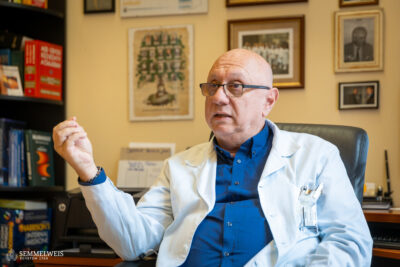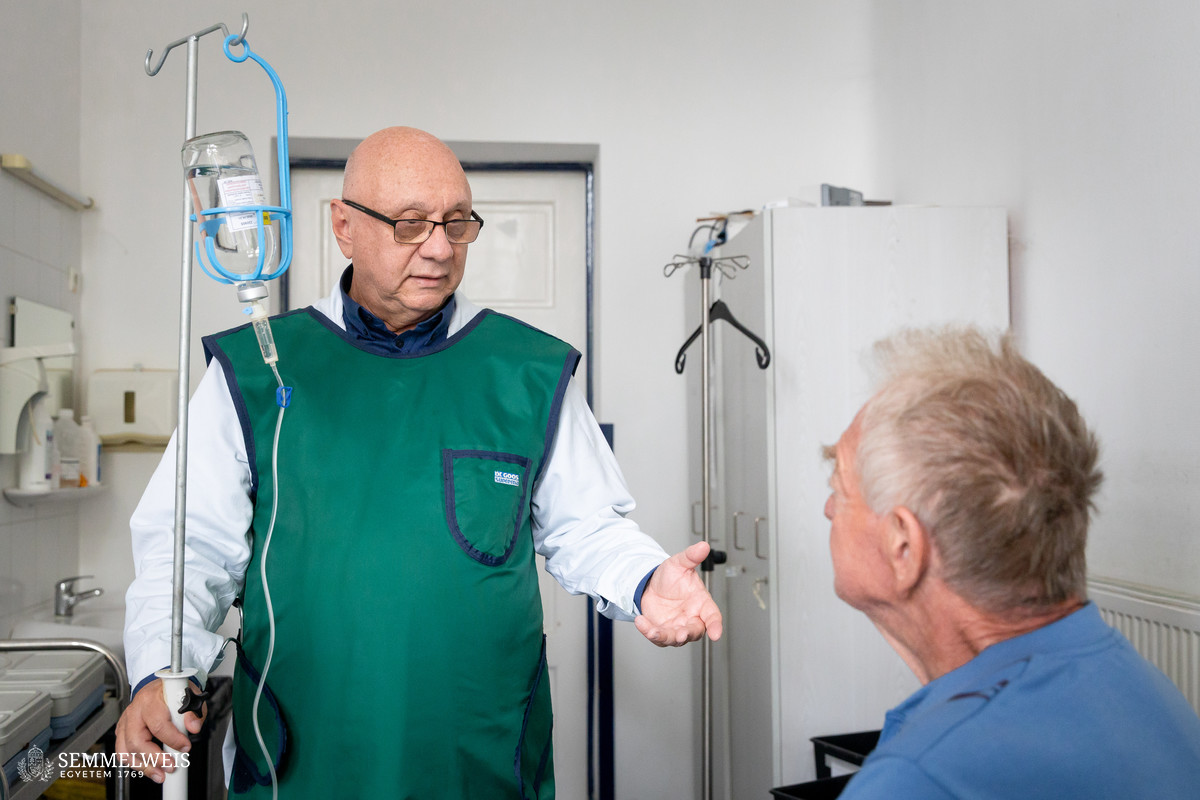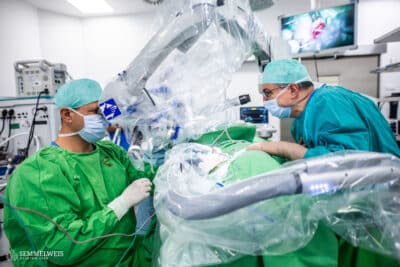Many believed that the days of nuclear medicine were numbered, as CT and MR had replaced isotope imaging in many areas of diagnostics. This has changed with the advent of PET-CT, but the real big change has occurred in the field of isotope therapies, with the advent of a new generation of compounds that can be used for both diagnostic and therapeutic purposes, the so-called teranostics (derived from the terms ‘therapy’ and ‘diagnostics’), Dr. Péter Lakatos, Head of the Isotope Therapy Unit of the Department of Internal Medicine and Oncology, told our website.
The molecules linked to specific tumor receptors guide the attached isotopes to the tumor, where their radiation effectively destroys the tumor cells.
“This not only offers effective treatment but also aids diagnosis, as molecules bound to tumors and labeled with isotopes can be used for imaging, to determine tumor size and location, as well as to assess the therapeutic effect,” the professor added.
Radioiodine treatments have been used for decades in the treatment of hyperthyroidism and thyroid tumors, Dr. Péter Lakatos noted. In the last two years, the clinic’s isotope therapy profile has been expanded to include the treatment of neuroendocrine (hormone-producing) tumors (Lu-177-DOTATATE therapy), adrenal gland medulla tumors (paraganglioma and phaeochromocytoma) and childhood neuroblastomas, i.e. the malignant tumors of the sympathetic nervous system (I-131-MIBG therapy). The latter is a collaboration between BOK and the Tűzoltó Street Department of the Pediatric Center.
For the first time in Hungary, the so-called VERITAS protocol, which still represents a novelty in the international arena as well, was recently applied to save the life of a 3.5-year-old girl with severe cancer, whose recovery was significantly enhanced through isotope treatment, Dr. Péter Lakatos reported on the results.
He added that since the youngest patients have special needs that only pediatricians can address professionally, they are treated at BOK in collaboration with the staff of the Pediatric Center, under the leadership of Associate Professor Dr. Miklós Garami.
 Patients with bone metastases and in pain are also treated at the clinic. In such cases, the targeted isotope can reduce the pain and the size of the metastasis. For tumors that cannot be cured completely, certain procedures, including isotope treatments, can be applied to achieve a stable state in which the tumor does not grow or cause any problems for the patient, Dr. Péter Lakatos explained. For example, a person with a neuroendocrine tumor can live up to 10 years and a person with thyroid cancer even up to two decades.
Patients with bone metastases and in pain are also treated at the clinic. In such cases, the targeted isotope can reduce the pain and the size of the metastasis. For tumors that cannot be cured completely, certain procedures, including isotope treatments, can be applied to achieve a stable state in which the tumor does not grow or cause any problems for the patient, Dr. Péter Lakatos explained. For example, a person with a neuroendocrine tumor can live up to 10 years and a person with thyroid cancer even up to two decades.
Once the funding process is completed, isotope therapy will soon become available in the clinic for the treatment of inoperable metastatic prostate cancer (Lu-177-PSMA treatment), and clinical trials are underway for breast and lung cancers, for which isotope therapy may also be available in a few years. The Department of Internal Medicine and Oncology is ready to apply these, said Director Dr. István Takács. Besides Semmelweis University, isotope therapy is also offered at the Universities of Szeged, Pécs, and Debrecen, as well as the National Institute of Oncology. With 314 procedures performed last year, BOK is a leading institution in the country, the director of the department stressed. All isotope treatments within Semmelweis University are carried out here, in collaboration with the relevant departments.
Eszter Keresztes
Translation: Judit Szabados-Dőtsch
Photos by Boglárka Zellei – Semmelweis University



